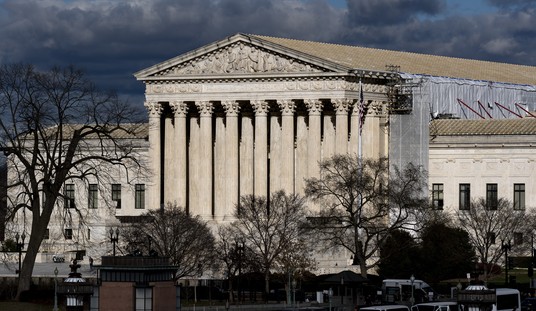Remember when inflation was supposed to be “transitory”? Good times, good times. Instead it appears to be accelerating, even more than yesterday’s look at wholesale prices suggested. The consumer price index hit its highest annual inflation rate in 31 years last month, and the blow to households is both powerful and broad:
Inflation across a broad swath of products that consumers buy every day was even worse than expected in October, hitting its highest point in more than 30 years, the Labor Department reported Wednesday.
The consumer price index, which is a basket of products ranging from gasoline and health care to groceries and rents, rose 6.2% from a year ago. That compared to the 5.9% Dow Jones estimate.
On a monthly basis, the CPI increased 0.9% against the 0.6% estimate.
Stripping out volatile food and energy prices, so-called core CPI was up 0.6% against the estimate of 0.4%. Annual core inflation ran at a 6.2% pace, compared to the 4% expectation and the highest since November 1990.
This is much worse than economists expected, although yesterday’s wholesale-price report should have prepared them for this outcome. That report also showed an 11-year high in inflation and an annualized increase of 8.6%, a slight increase from September. The Washington Post reports that the CPI’s increase is broader:
Forecasters expected a surge in October’s inflation data, in large part because of soaring gas and energy prices, plus ongoing supply chain backlogs in the used-car market. The energy index rose 4.8 percent in October compared to the month before, as the gasoline index increased 6.1 percent.
Yet, inflation expanded to other categories, increasing throughout the economy, with the BLS noting higher prices for energy, shelter, food, used cars and trucks and new vehicles among the larger contributors.
“Along with shelter, used cars and trucks, and new vehicles, the indexes for medical care, for household furnishing and operations, and for recreation all increased in October,” the report read.
It’s hitting Americans where they live, literally, in terms that we haven’t seen in a generation.
The Fed still claims this is “transitory”:
Officials at the Fed and the White House still expect inflation will be “transitory,” meaning it won’t become a permanent feature of the economy. They argue that the price increases are driven by supply chain backlogs that have constrained auto manufacturing, housing construction and food production alike. Inflation won’t come down to more sustainable levels, they argue, until those supply chains have time to clear.
But it’s unclear when that will happen, especially given how vulnerable the economy remains to the pandemic and waves of the virus. At a news conference last week, Fed Chair Jerome H. Powell said “the level of inflation we have right now is not at all consistent with price stability.”
Some economists are also concerned that while wages are climbing, they aren’t growing enough to compensate for inflation and the rising cost of living, at least in the short term.
No kidding. Plenty of people warned about that risk as far back as April 2020 when Congress began crafting emergency bailouts for the pandemic shutdowns. Democrats ended up winning that argument, not just in April 2020 but also in December 2020 and especially again in March 2021, when Joe Biden wanted credit for a new helicopter-cash giveaway before the previous stimulus funds had even been dispersed. That spiked demand at a time when the supply-chain system was failing and when the Biden administration was asleep at the switch on that very predictable problem.
The result? A distortion of demand against supply in goods, services, and labor. For the “transitory” apologists, note well that the previous peaks were associated with direct stimulus payments. This time, we’re accelerating even without that kind of sugar high spiking demand. Inflation is real, spectacular, and as Long notes, damned near universal:
October saw the biggest jump in inflation this year (tied with June).
Goldman Sachs (among others) warned inflation will get worse before it gets better. The big Q is how long before it starts getting better? pic.twitter.com/fdonvfd419
— Heather Long (@byHeatherLong) November 10, 2021
Where Americans are seeing the most inflation:
Fuel oil 59% (y/y)
Gas 50%
Utility 28%
Used cars 26%
Hotels 26%
Steaks 24%
Bacon 20%
Pork chops 16%
Wash machines 15%
Furniture 12%
Eggs 12%
Fish 11%
TVs 10%
New cars 10%
Chicken 9%
Milk 6%
Coffee 6%
Flour 5%
Rent (OER) 3.1%— Heather Long (@byHeatherLong) November 10, 2021
This is nothing less than a viciously regressive tax. Those with steady and scalable incomes can weather this, at least for a while. Low-income households and those on fixed incomes (such as retirees taking payouts from pensions and 401Ks) cannot. Most of these are staples, and all of these will erode buying power not just in the moment but from this point forward for those who can afford it least.
Say, remember all those Democrats taking credit for forcing wages up with these policies? That turns out to be a bust, too:
After adjusting for today’s new inflation numbers, average hourly wages fell 1.2% from Oct 2020 to Oct 2021. Change in real average hourly earnings combined with a decrease of 0.3% in average workweek resulted in a 1.6% decrease in real avg weekly earnings https://t.co/6ybYIwIHBm
— Catherine Rampell (@crampell) November 10, 2021
Biden’s making America poorer and more expensive all at the same time.
So what’s next? The Fed will have to act to tighten money supply, which will impact business expansion in the coming months. That will slow down job creation while we’re still about six million jobs shy of recovery from the pandemic shutdowns, but it might slow down inflation for a while. Solving the supply chain crisis might help too, but that’s still months away and then only if the White House can figure out that it’s not a matter of a few extra shifts at the docks.








Join the conversation as a VIP Member